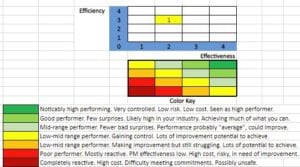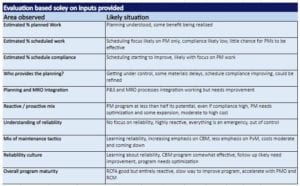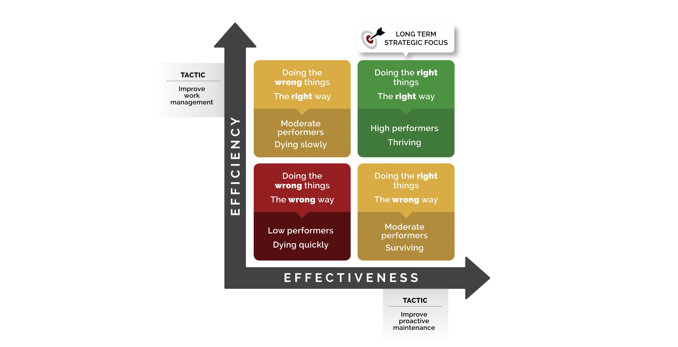Our business case estimator insights show you both savings and earnings potential for improvements in maintenance and reliability. If you are reading this, you probably think there is some opportunity to improve your operational reliability and maintenance performance. You might want to create a business case for change that you can use to get senior management approval and funding. You are in the right place. We’ve created the tools for you to do that, they are readily accessible and inexpensive (the first step is even free). After a period of isolation and/or skeleton staffing, you can probably see problems that may be more hidden when operating with a full staff. Now is a good time to address those to bring performance up as a part of your “new normal”.
Our book, “Paying Your Way – Improving Performance through Uptime”, by James Reyes-Picknell, may become your best friend real soon.
Estimating the value of improvements
If you are in charge of maintenance, reliability, or asset management, you probably have very little spending authority, yet you may realize that you are sitting on the potential to save your company a lot of money by making improvements. Your general managers, VP finance, and executive-level operations and finance officers will want a solid business case. Rather than paying 10 or more times as much for a consultant’s assessment and business case, you can get it yourself much more quickly and for far less. Answer questions honestly and get some meaningful inputs about current performance and related financials. You can probably approve the costs of using the tools and with the result, or easily get the needed approval.
Maintenance &Reliability Maturity
We have a simple 10 question “Maintenance and Reliability Maturity Assessment” tool. It asks for some easy to find metrics and uses them to provide a rough maturity assessment on the scales of Efficiency and Effectiveness. Efficiency is all about how well you can get your work done, while effectiveness is about ensuring you are doing the right work.
In a call, our subject matter expert will walk you through the assessment and send you the results.
What it looks like …
If you’ve been following our blog, you have probably seen the Efficiency and Effectiveness graphic before. You want to be in the upper right corner of that plot. An efficient organization will plot near the top of the grid. An effective one will be at the right. If you are doing both, you are in the green zone doing the right things the right way. You are reaping the benefits of being in the green.
A highly reliable operation is always cheaper to maintain and operate. But it is sometimes difficult to answer the question, “how much less?” Our “Business Case Estimator” gives you that answer.
In the M&R Assessment and the Estimator you will find where you are on that plot: your results may look something like this:
 Below the plot is a key with very generalized descriptions. They are not industry-specific, and they are very sensitive to the answers you provided in the self-assessment. If they are not an exact match, they are probably close.
Below the plot is a key with very generalized descriptions. They are not industry-specific, and they are very sensitive to the answers you provided in the self-assessment. If they are not an exact match, they are probably close.
This initial assessment will give you a rough idea of whether or not you should investigate further.
If your responses land you in the red, orange, or yellow boxes, then you really need to identify what it is that you can do better. A small additional investment now, could reveal massive potential. On the other hand, if you are in the light green zones, you are already doing well, but the dark green box is still your goal.
What’s it worth?
The above example shows a yellow rating. The description is, “low to the mid-range performer. Gaining control. Lots of improvement potential to achieve”. It doesn’t say much about “how much”. For that, you need our Business Case Estimator. This is another service we provide – either on its own, or you can get it included in our “Uptime Rapid Value Assessment“.
We blend financials and maintenance metrics
The Conscious Asset Business Case Estimator insights go quite a bit further, adding in estimates of cost savings and revenue improvements that are possible. You may need help from your finance people to get all the inputs. Enter the requested performance and financial data with the answers from the M&R Maturity assessment to generate a forecast of the value of performance improvement potential.
Example: for a larger operation having the answers to produce the yellow box above, having $1.5 billion in replacement asset value (i.e.: the cost to replace all the assets with today’s capacity), and a maintenance budget of around $90 million, here is the potential gain:
 The savings in maintenance costs alone are substantial, nearly $32 million. Yes, about a third of the budget. Seems high? Well, it should. Work efficiency makes a big difference on spending as does coordination of planning with MRO spares. The effectiveness of the maintenance program is actually on the low end of the range. This organization isn’t getting much benefit from its proactive maintenance program. Doing the wrong work isn’t adding value. Fixing that can drive both additional savings and revenue gains.
The savings in maintenance costs alone are substantial, nearly $32 million. Yes, about a third of the budget. Seems high? Well, it should. Work efficiency makes a big difference on spending as does coordination of planning with MRO spares. The effectiveness of the maintenance program is actually on the low end of the range. This organization isn’t getting much benefit from its proactive maintenance program. Doing the wrong work isn’t adding value. Fixing that can drive both additional savings and revenue gains.
You will get some useful financial forecasts. Improvements to production, margin, and profit as well as your use of working capital. Your General Manager, CFO and Financial managers will be very interested in these. We can’t estimate your improvement costs easily, but in our experience those costs are low compared with the benefits you can achieve. The time to payback your investment is usually less than a year. One thing for certain – if you don’t act, you won’t see the benefit.
What improvements are needed?
In addition to the estimates, we also provide a table of insights about the present state, based on your inputs. It should give you a good idea of where improvements are needed and how the situation presents today. You can learn more about what might be happening, and what to do about it in our book, “Uptime for Executives“.
 The comments are automated, following a set of rules based on your inputs. They reflect our experience in seeing hundreds of sites at various possible states (combinations) of maturity and performance.
The comments are automated, following a set of rules based on your inputs. They reflect our experience in seeing hundreds of sites at various possible states (combinations) of maturity and performance.
Maintenance personnel seldom connect the current state (i.e.: the symptoms they see daily) with the root causes of the problems, and what to do about them.
You inputs matter!
When doing the self-assessment, pay particular attention to the definitions we’ve provided, particularly for what is planned and what is scheduled. A schedule showing when you are expecting to do work, is not a plan in our definitions.
Those two are often misunderstood, so whether or not you agree with our definition isn’t the point – the model is based on those definitions. If you use a different definition you may need to dig a bit, or estimate, to get accurate inputs, but it will be worth the effort. Something to consider if you find that you need to estimate the inputs – your inability to look them up easily is telling you something!
Keep in mind, this is an Estimator, not an artificial consultant, so if you purchase use of the estimator we do include some consulting time to make sure you understand what you are getting. Click here to schedule an appointment so we can talk about what you can do to realize the benefits that are estimated. After you use the tool, download and keep it. We do not keep your data so we can’t refer to it if you do not save it yourself.


